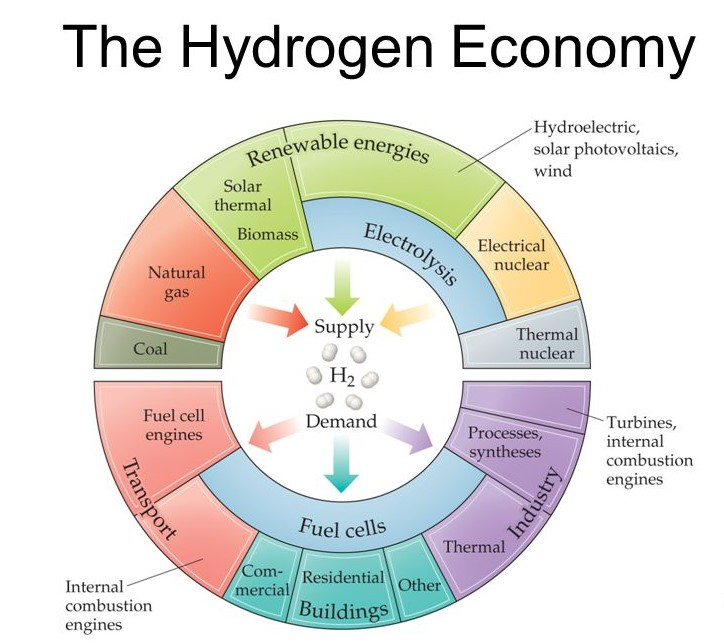Governance
Task Force for Coal-Based Hydrogen Production
- 14 Sep 2021
- 3 min read
Why in News
Recently, the Union Government constituted a Task force and Expert committee to prepare a road map for coal-based hydrogen production (Black Hydrogen).
- The Task Force is also responsible for coordination with the Coal Gasification Mission and NITI Aayog.
Key Points
- Coal-Based Hydrogen Production:
- About:
- Coal (one of the Hydrocarbon Fuels) is one of the important sources of hydrogen making apart from natural gas and renewable energy through Electrolysis.
- However, Coal has not been encouraged in hydrogen production because of the fear of Carbon Emission while extracting hydrogen via coal.
- Almost 100% of hydrogen produced in India is through natural gas (Grey Hydrogen).
- Benefit:
- Cost of hydrogen produced from coal can be cheaper and less sensitive to imports.
- Challenge:
- Production of hydrogen from coal will have challenges in terms of high emissions and CCUS (Carbon capture, utilisation and storage) will play an important role.
- Carbon monoxide and carbon dioxide formed during the coal to hydrogen process have to be trapped and stored in an environmentally sustainable manner (CCS and CCUS).
- Production of hydrogen from coal will have challenges in terms of high emissions and CCUS (Carbon capture, utilisation and storage) will play an important role.
- About:
- Hydrogen Economy:
- It is an economy that relies on hydrogen as the commercial fuel that would deliver a substantial fraction of a nation’s energy and services.
- Hydrogen is a zero-carbon fuel and is considered an alternative to fuel and a key source of clean energy. It can be produced from renewable sources of energy such as solar and wind.
- It is an envisioned future where hydrogen is used as fuel for vehicles, energy storage and long-distance transport of energy. The different pathways to use hydrogen economy includes hydrogen production, storage, transport and utilization.
- In 1970, the term 'Hydrogen Economy' was coined by John Bockris. He mentioned that a hydrogen economy can replace the current hydrocarbon-based economy, leading to a cleaner environment.
- Present Scenario:
- The current global demand for hydrogen is 70 million metric tons, most of which is being produced from fossil fuels- 76% from natural gas and 23% from coal and remaining from the electrolysis of water-- consumes 6% of the global natural gas and 2% of the global coal.
- This results in CO2 emissions of around 830Mt/year out of which only 130Mt/year is being captured and used in the fertilizer industry.
- Currently, much of the hydrogen produced is used for oil refining (33%), ammonia (27%), methanol production (11%), steel production (3%) and others.
- The current global demand for hydrogen is 70 million metric tons, most of which is being produced from fossil fuels- 76% from natural gas and 23% from coal and remaining from the electrolysis of water-- consumes 6% of the global natural gas and 2% of the global coal.
- Related Initiatives:







